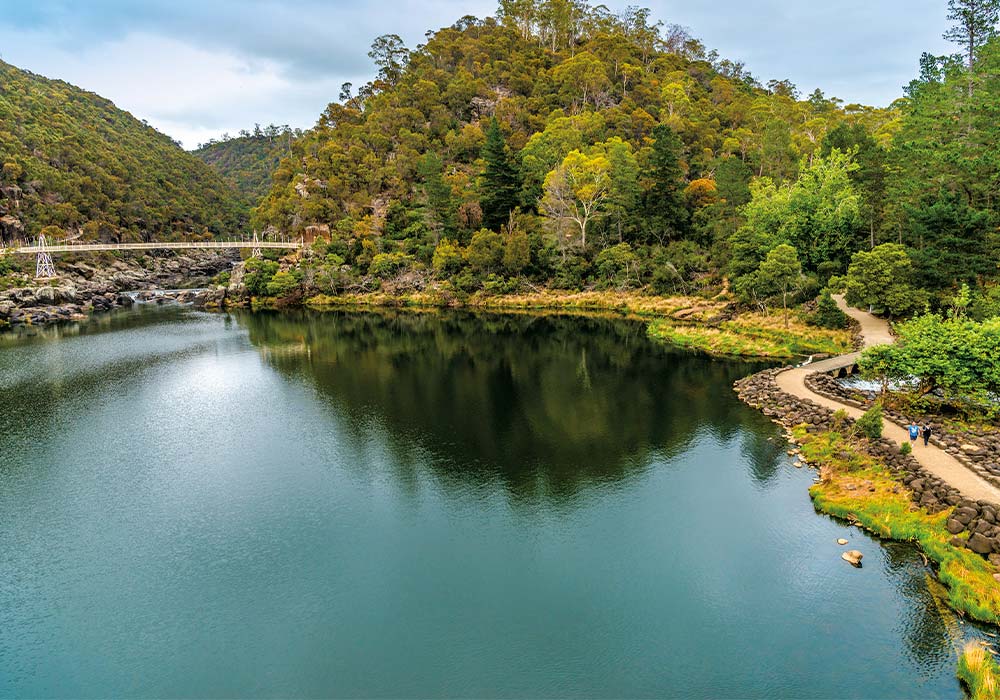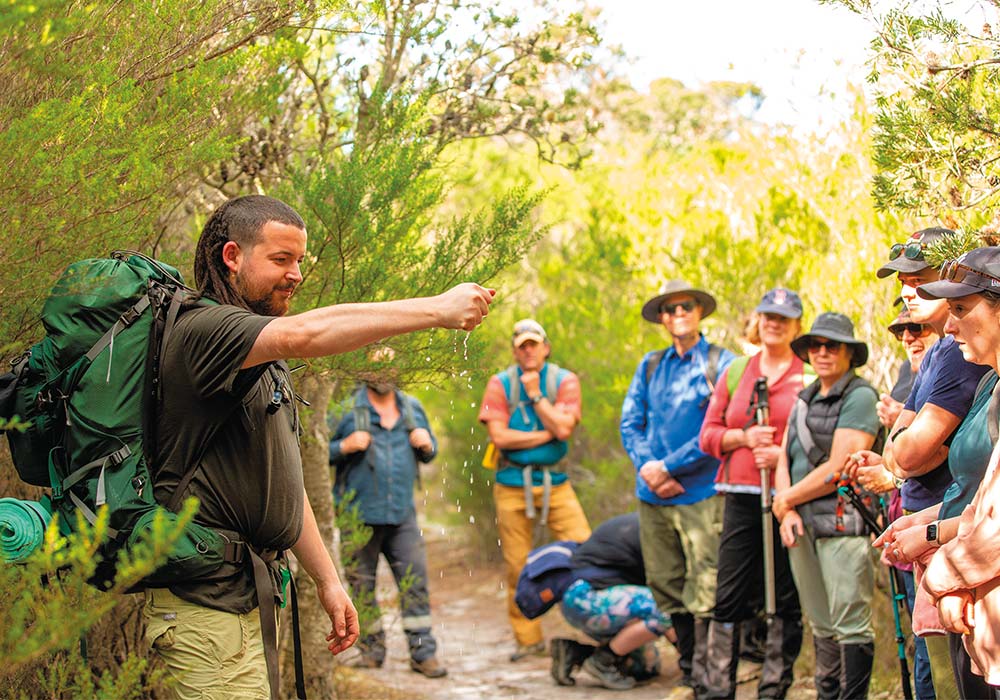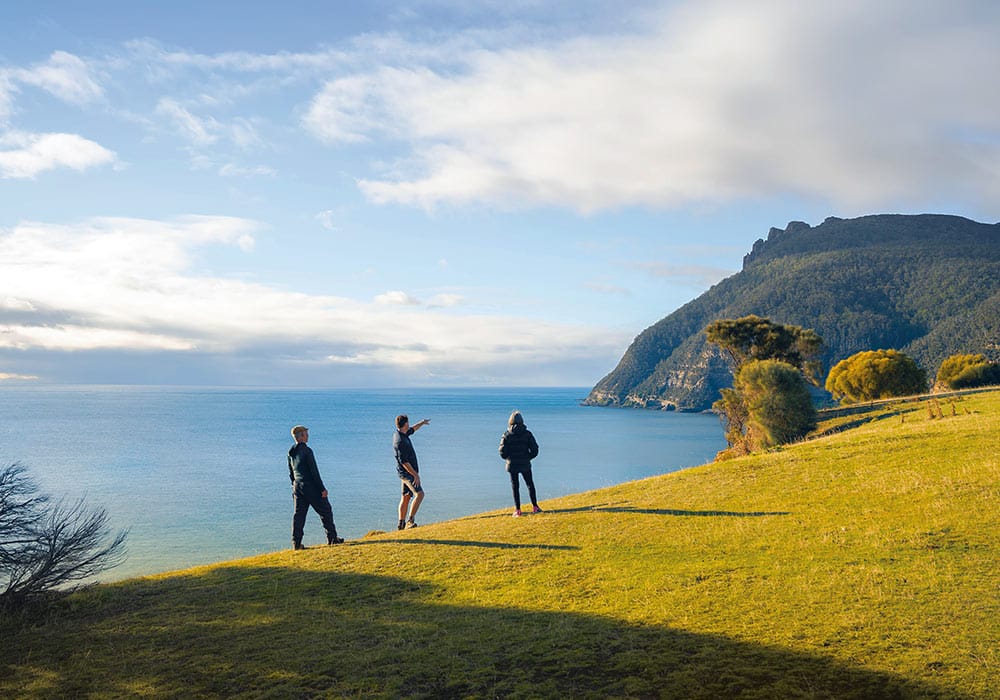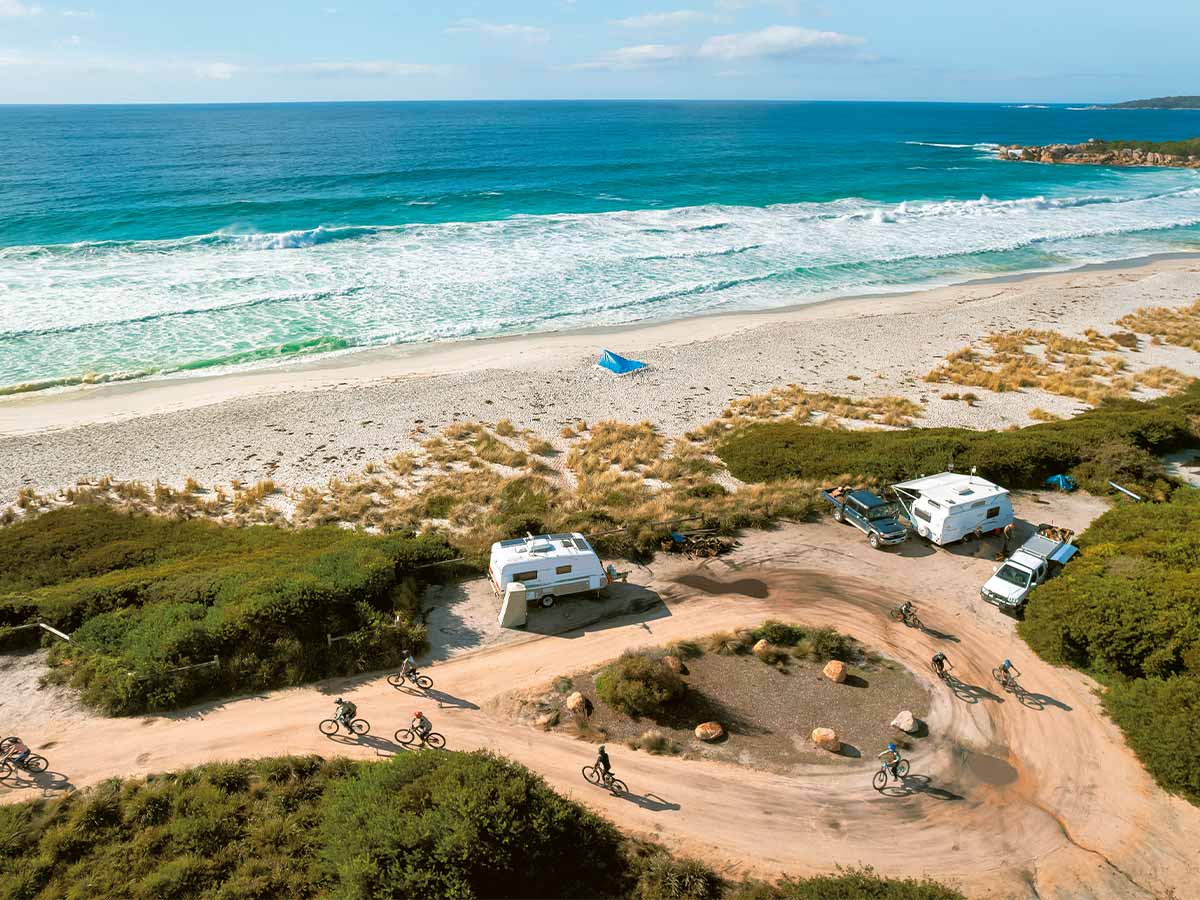Welsh-born New Zealander Sarah-Jane Perry loves to travel. She talks to Peta Stavelli, sharing insights into her RV travels with her partner, Craig, both across New Zealand and Tasmania, Australia.
Scrolling through my Facebook feed, I was drawn to a comment on an RV travel page by Sarah-Jane Perry. Sarah-Jane was commenting on her recent trip around Tasmania. How convenient,
I thought; I need to talk to this lady to get a Kiwi perspective on travel around Australia’s island state.
Whenever I mention that I was born in Tasmania, people say they’ve heard that it’s a lot like New Zealand. For some, that sense of familiarity might be a reason to come here, but for others, it could be a turn-off. After all, who wants to go to places just like those they’ve already been?
It’s true to say there are similarities. Sometimes when I am travelling around, I think: ‘This could be New Zealand’, but at other times, there could be no greater contrast between the two places. Sarah-Jane agrees. “People often say they’ve heard that Tasmania is like New Zealand in the 1970s. It’s definitely not,” she says.
“We really enjoyed it and highly recommend a visit. We loved the freedom camping there, and we ate out a lot and didn’t have a single disappointing meal.”

Sarah-Jane and Craig just love to get on the road and travel “anywhere but home” to have a break from their everyday routines. Their adult son lives independently, and the couple’s two dogs are also happy travellers. When time allows, they like nothing more than to pack up and go at a whim.
With their holiday inspiration simply “to go somewhere that was not home”, the couple initially considered purchasing a bach. However, finances did not allow them to realise that dream. So, they began researching mobile home options.
“Again, we found that the majority of those we looked at were too expensive, so, we eventually turned our attention to researching campervan conversions, but then we couldn’t find one to suit. So, we decided to build our own.”
When they found a decommissioned ambulance for sale at Turner’s Car Auctions in 2019, the couple pounced. They bought it sight unseen and spent the next 10 months converting it to suit their needs. The base vehicle cost $14,000 and they estimate their additional expenditure on the conversion to be around $11,000 to get it fully warranted with self-contained certification. Since then, the couple have travelled extensively around both islands in their aptly named vehicle L’Ambo. Sarah-Jane says, that with Tauranga as their home base, they feel very spoilt.
“We have a few favourite spots close by to which we travel regularly. In 2021, we decided the time was right to travel further afield, and we headed down the coast via Napier to Plimmerton and then across Cook Strait.”

The couple’s plans for their South Island adventure were open-ended, and that turned out to be a blessing, as torrential rain thwarted the exploration of some places. Fortunately, the couple are flexible and having a vehicle that’s 4WD also helps get them out of any “tricky situations”.
It was after this South Island trip that the adventurous couple began to ask themselves: “Where to next?”
The pair had lived in Australia for a decade and made some good friends.
While there, they had explored a fair bit of the country but had not ventured to the island state.
“We decided to meet our best friends in Tasmania. They own a caravan, which they brought across from the mainland on the Bass Strait ferry. Meanwhile, we hired a Sandpiper motorhome from Cruisin’ Motorhomes, and we found that the whole experience could not have been easier.”
After flying directly from Auckland to Hobart in late November 2023, Sarah-Jane and Craig picked up their motorhome from the nearby depot and drove straight through to meet their friends in the north of the state.
“We weren’t sure how they would be feeling after their 12-hour crossing from the mainland, so we spent the first night alone while we waited to meet them at Low Head Tourist Park.”

The BIG4 Holiday Park is a waterfront campground located 45 minutes north of Tasmania’s second-largest city, Launceston, and 90 minutes from the Spirit of Tasmania Ferry Terminal in Devonport.
“We’d done our research, so after our friends had rested overnight, we met up with them mid-morning the following day and headed off in their car to take in some of the local sights.”
During the next few days, the group visited Seahorse World and Platypus House, as well as Launceston City’s famed Cataract Gorge, where they enjoyed the spectacular gondola ride. Sarah-Jane says all of their Tamar Valley adventures were “a real treat” and none were not considered expensive.
From Launceston, the travellers headed to St Helen’s – a small beach town on Tasmania’s stunning east coast – stopping off along the way at a few places to enjoy the local delicacies. The largest town on the northeast coast, St Helen’s is also a fishing port well-known for its abundance of fresh seafood.
St Helen’s is within easy striking distance of the Bay of Fires, a lauded conservation destination, famed for its coastal walks and home to the award-winning Bay of Fires Lodge. The azure waters and white-sand beaches contrast with boulders encrusted with rust-coloured algae. It’s breathtakingly beautiful, as Sarah-Jane, Craig, and their friends found.
“We freedom camped at Swimcart Beach Camping Ground, and it was stunning. It’s a very well-designed campground, just 50 metres from the white-sand beach. We loved it.”
Nor were they disappointed with any of their other stopovers, as they travelled down the coast, pausing for a tipple or two at vineyards and distilleries along the way. They also enjoyed some “beautiful” seafood at The Lobster Shack in Bicheno.

At Coles Bay, they braved the hot conditions as they climbed the track to overlook “stunning” Wineglass Bay. Later there was more seafood to be enjoyed at an oyster farm. They also took an inland diversion, driving away from the coast to ensure they also took in some of the colonial towns and “lovely old buildings” along the Midlands Highway. Back on the coast, the group eventually found their way south and east to Port Arthur Historic Site where they stayed at the NRMA campsite close to the former penal colony. Port Arthur is one of Australia’s most popular tourist destinations.
The penal colony was established in 1830 and the penitentiary, old asylum, and doctor’s surgery are among 30 restored buildings and sandstone ruins set amid 136 hectares of beautiful, manicured grounds. Sarah-Jane says they enjoyed their after-hours ghost tour and the cruise around the nearby Isle of the Dead. They also took side trips by fast boat around the coast, drove to the tessellated pavements, and visited a local lavender farm.
There’s a lot to see in the surrounding area, so she advises allowing a few days for a thorough exploration. The same was true of their time in the capital city, Hobart.
“We had an absolute ball while we were there. I can’t specifically recommend anywhere to eat because we loved it all. You really could eat anywhere and never be let down.”
Among the many places they visited around the city, the group took in Salamanca Market, Cascade Brewery,
The Female Factory, and MONA (the quirky Museum of Old and New Art). They also drove to the top of kunyani/Mt Wellington to take in the views of the city and say they loved it all.
“It was just incredible going around Tasmania. We really enjoyed it. Everything from the ease of getting there to the picking up the motorhome, and the variety of the freedom camping options.”
If they have any complaints, it’s that they could not stay longer and see more.
“We would have loved more time to see the West Coast, for example. It’s definitely not New Zealand. I think people will be surprised if they go to Tasmania. We were not disappointed once.”
Sarah-Jane and Craig have already travelled extensively within New Zealand and Australia. They have also hired a motorhome and explored more of the UK and Scotland.
Tasmania in a nutshell

Names: lutruwita; Tasmania
Coordinates: 42 degrees south; 147 degrees east
Population: 571,165 (September 2022)
Area: 68,401km2
Capital: nipaluna – Hobart (home to 50% of the entire population), Tasmania is considered Australia’s most homogenous state with 65% of the population descended from just 10,000 settler families
Official languages: palawa kani, English
Settlement: Aboriginal: 42,000 years ago. European:1642, Abel Tasman landed. 1803: Lt. Bowen’s first military camp was established at Risdon Cove, mostly in a bid to deter French settlement of the island
Geography: The island state of Tasmania comprises around 334 smaller islands
Climate: Cool temperate – compares to parts of Te Waipounamu
Conservation: Protected areas (including the Tasmanian Wilderness World Heritage Area) cover around 21% of the state. The air quality is said to rival that of Antarctica.
Tourism: In 2023, 1,262,200 visitors arrived in Tasmania and stayed an average of nine to 10 nights. New Zealanders (approximately 14,500) make up the fourth-largest visitor group after the US, UK, and Singapore.
Getting there: Sea or air. Air New Zealand’s direct flights from Auckland to Hobart will be discontinued for an indefinite period in April. Fly instead to Melbourne or Sydney for the best selection of frequent flights to Tasmania. Cruise ships frequently ply between New Zealand ports and Hobart in the summer months. A vehicular ferry runs between Geelong, Victoria and Devonport, Tasmania.
Getting about: Hire a car or RV at Hobart or Launceston Airports
Best time to visit: Late summer for settled weather
Expect to see: Wilderness, colonial buildings; quaint towns and cities; an abundant maritime heritage; white sand beaches
What to do: Wild walks abound. Try walking Maria Island for starters. You can also e-bike the conservation island and see wombats at large. Other walks include Cradle Mountain and Wineglass Bay.
Eat and drink: Fresh, local, seasonal, foods: stone-fruits, cheese, seafood. Tasmanian wines are outstanding. Drink the exceptional bubbles too. Look for artisan brewers of sheep’s-milk vodka, whisky, and beer.
Time for a taste? Allow three to 10 days for a tiny Tassie taster and two weeks or more for a good immersion. While it’s a cool temperate climate, Tasmanians make the most of their winter months with a dazzling array of festivals. Check out the events calendar on the left.
Tasmanian autumn and winter events calendar
April
- 1–30 April Tasmanian Autumn Festival
- 6–7 April Crave Harvest Festival
- 19–20 April Trail Graze 2024
May
- 2–4 May Agfest
- 15–19 May Australian Musical Theatre Festival
- 31 May The Very Short Film Festival
June/July
- 1–30 June Permission to Trespass
- 21 June MONA Nude Solstice Swim
- 28 June–7 July Festival of Voices
- 29 June–20 July Bicheno Beams (light show)






